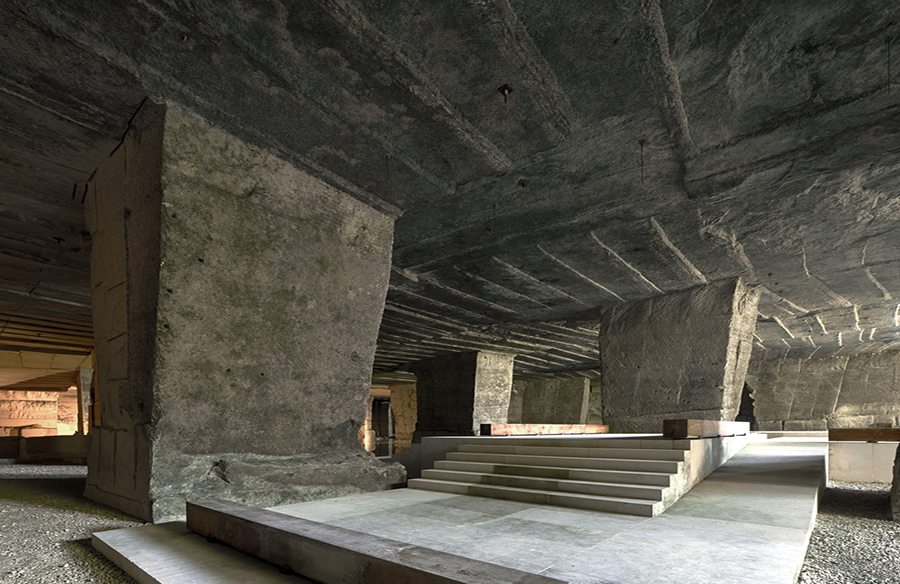The endeavor to design a performance venue within the Arcari caves, formerly a quarry for Pietra di Vicenza stone, emerged from a longstanding partnership between David Chipperfield Architects and the Laboratorio Morseletto. This collaboration stemmed from a mutual appreciation for traditional Venetian stone craftsmanship.

Embracing Nature’s Creation
Located in Zovencedo, near Vicenza, the Arcari caves bear witness to six decades of stone quarrying, resulting in a cavernous space adorned with irregular massive piers and submerged beneath a wooded hill. Upon entering the caves, visitors are enveloped by a harmonious blend of space, material, and structure, where the boundary between nature and architecture becomes blurred.
Minimalist Intervention
Acknowledging the caves’ innate beauty, the Morseletto family often utilized the space for informal gatherings, prompting the need for a more permanent solution. The architectural intervention, characterized by platforms, steps, and ramps crafted from white Vicenza stone, pays homage to Adolphe Appia’s stage designs. Referred to as Cavea, these platforms echo the tiered seating of ancient Roman theaters, establishing a symbiotic relationship between the natural caverns and the constructed performance areas.

Continuation of Tradition
Exclusively utilizing Vicenza stone, the project seamlessly integrates with the existing environment, symbolizing a continuation of the historic quarrying practices. Illuminated by ambient and stage lighting designed by Viabizzuno, the water-filled chambers surrounding the performance space are transformed into ethereal landscapes, further enhancing the venue’s allure. Through thoughtful design, Cava Arcari emerges as a versatile space that celebrates and accentuates the unique attributes of its surroundings.
Conclusion
Cava Arcari, conceived by David Chipperfield Architects and the Laboratorio Morseletto, stands as a testament to the enduring collaboration between architecture and nature. By preserving the integrity of the Arcari caves while introducing subtle interventions, the project honors the site’s rich history while offering a contemporary platform for cultural expression and appreciation.
















